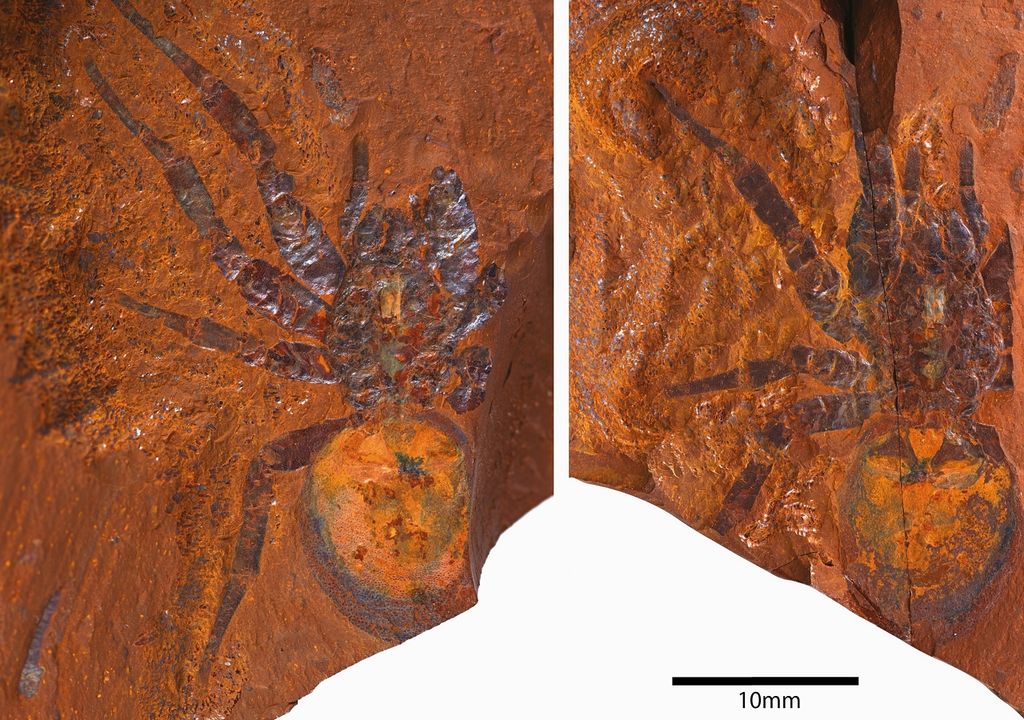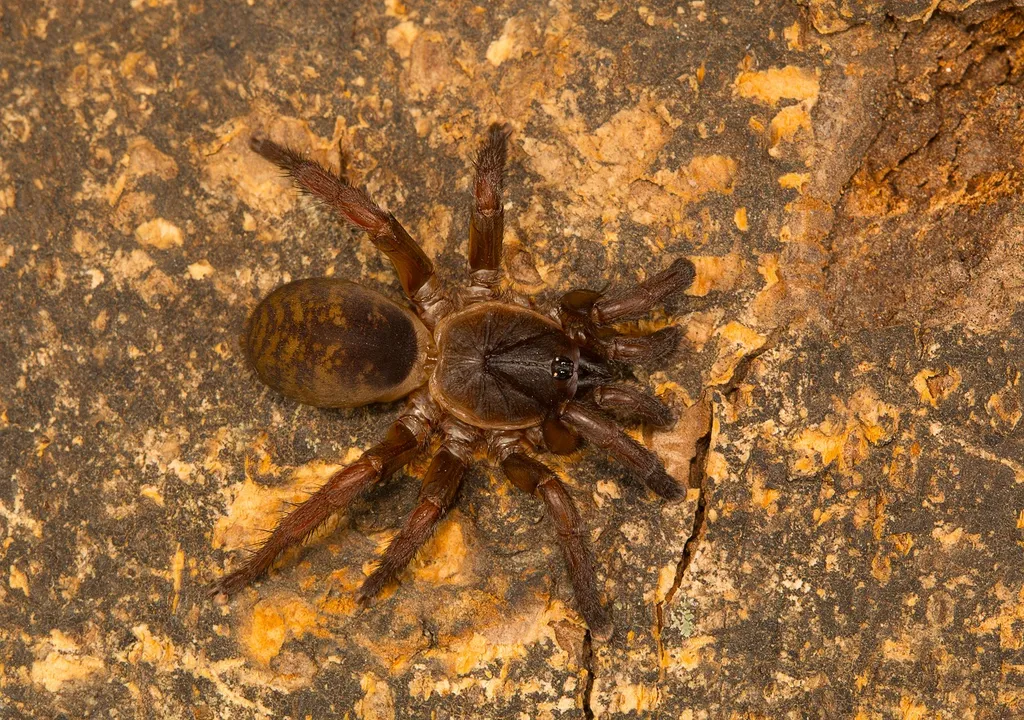Fossil of the World's Second Largest Spider Discovered in Australia
Although the fossil record has made research difficult, its characteristics will impact you and leave you thinking about the effects that climate has on spiders throughout the ages.

Mygalomorphic spiders (known in America as tarantulas) have been present in the Australian mainland mass since before the disintegration of Gondwana. Currently, the species is represented in those latitudes by a diverse fauna of 12 families. Despite its extensive evolutionary history, only one mygalomorphic spider fossil has been found in Australia.
To delve into this topic, the research "A large brush-footed trapdoor spider (Mygalomorphae: Barychelidae) from the Miocene of Australia", published in the Zoological Journal, described the fossil of the recently found spider Megamonodontium mccluskyi. The species superficially resembles the brush-legged trapdoor spiders that are currently found in western New South Wales. They are similar to the Idiommata, in the sense that they have robust proportions of body and legs, in addition to a truncated pedipalpus (double appendix type).
However, the lack of a dense shoulder, the presence of a long patella and teeth in the tarsal nail (legs), suggest that the species is more basal than those that inhabit Australia. The research team proposed that this species is closely related to the Monodontium spider from Southeast Asia and Papua New Guinea.
Characteristics of the recently discovered spider fossil
In terms of size, Megamonodontium mccluskyi is the second largest fossil spider in the world. The first place is attributed to Mongolarachne jurassica from the homonymous period that lived in China, which has a body length of 24.6 mm. To give us an idea, Megamonodontium mccluskyi is five times the size of the currently existing Monodontium spider. This is why its name is preceded by "mega".

The fossil Megamonodontium mccluskyi discovered is preserved with extremely high fidelity, mainly the bases of its mushrooms (defensive structures of the tarantulas). The latter can be chemosensory, mechanosensory, defensive and adhesive. In some mygalomorphic spiders, mushrooms can also generate sounds.
It will be interesting to study the mushrooms of other spiders, but the rich diversity of fossil spiders in some areas of Australia has just begun to be investigated. So far, more than a dozen specimens have been found, so this abundant material provides a new and interesting opportunity to study the preservation and evolution of mushrooms along with other sophisticated structures.
Impact of the climate on the evolution of spiders
The absence of Monodontium and Megamonodontium in present-day Australia suggests that the clade (ancestors) has become extinct locally in the last 15 million years. Outside the continent, Monodontium is still found in tropical forests with characteristics similar to the Miocene forest that surrounds McGraths Flat, a research site located in Australia where various fossils of animals and plants from the aforementioned time are found.
As plant species adapted to drylands evolved and became dominant, other species became extinct. Based on fossil sites such as Alcoota, Bullock Creek and Riversleigh, the scientific team states that during the late Miocene there was also a change in vertebrate fauna.
However, without a fossil record of spiders it has been difficult to predict which lineages became extinct during that time. Based on this species, it is evident that aridification during the Miocene also caused the extinction of several lineages of spiders.








